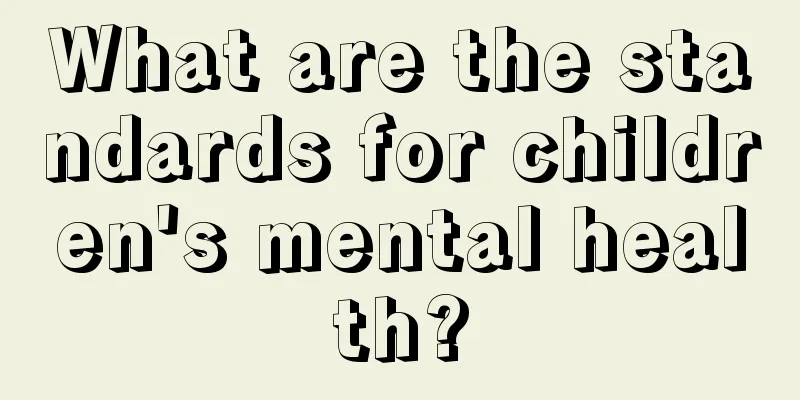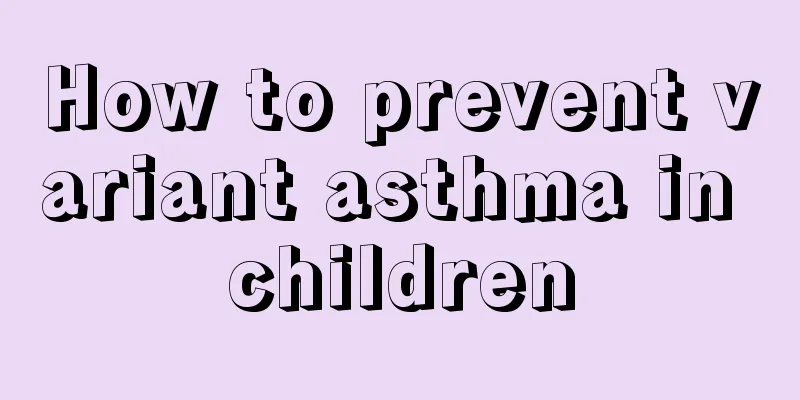How to put medicine in the buttocks of a child with a fever?

|
Children have very poor resistance and often have fever symptoms, so parents should make relevant plans, such as preparing a thermometer at home and some antipyretic drugs, especially knowing some physical cooling methods. In addition, some parents will choose to treat children's fever symptoms by inserting medicine into the buttocks. This situation is not common, so how should it be done? Children with fever, put medicine in the buttocks: Not recommended. For 3-month-old babies, you can first use physical cooling methods (warm water bath), and go to the hospital if necessary, and take antipyretics under the guidance of a doctor. If it is an antipyretic suppository, it generally will not have any other effects on the body except for possible side effects of the drug. Oral medication and rectal suppositories only differ in the way they are administered. Oral medications are absorbed through the digestive tract, and rectal suppositories are absorbed through the rectum. Generally, when children have a fever, oral antipyretics should be the first choice because the dosage can be adjusted according to the child's weight. Rectal suppositories have a fixed dose and are recommended for use when oral antipyretics are not possible. Fever is divided into four stages: low fever, moderate fever, high fever, and severe fever. The treatment methods chosen at different stages are different. Using two antipyretics at the same time can aggravate damage to liver and kidney function. The fever subsides quickly, and the temperature regulation center of infants and young children is not fully developed, so the body temperature does not rise. Guidance: Drink plenty of water, use physical cooling for low fever, oral medication plus physical cooling for moderate fever, and intramuscular injection of medication or insertion of antipyretic suppositories and patches for high fever. Hyperthermic intravenous drip medication. You can first use physical cooling methods. If the baby's temperature exceeds 38.5 degrees, temporarily take Tylenol or Motrin, and remember to drink plenty of water. Guidance: There are many reasons why a baby may have a fever, it may be a cold, tonsillitis; it may also be a serious disease such as pneumonia, enteritis, measles and meningitis. It is best to check and treat the symptoms first. Both of these drugs are antipyretics. Using them at the same time will generally cause excessive sweating and a drop in body temperature. Guidance: It is recommended to measure the body temperature carefully. If the temperature is below 36 degrees, give warm water in time and keep warm. If you sweat a lot, wipe off the sweat in time to prevent catching cold again. In the future, please note that you only need to use one of these two medicines in case of fever. |
<<: What should I do if my child has intestinal gas?
>>: What is the reason for a baby girl's chest lump?
Recommend
What causes bloodshot eyes in children?
If a child has bloodshot eyes, the eyes may itch....
How to educate babies aged two to three?
Babies between two and three years old are in the...
Why does a 2-year-old baby have white hair?
I believe every mother would be surprised to see ...
Are there white spots on a child's fingers vitiligo?
If your child has white spots on his fingers, you...
What causes strabismus in children?
Literally speaking, it means that the child's...
What should I do if my baby has a cold and doesn't like to eat?
The symptoms of colds in children are basically s...
Fever diet recipes for toddlers
When a child is sick with a fever, it is not only...
Bird flu symptoms in children
Avian influenza is a relatively common type of in...
How to care for baby's facial eczema
When summer comes, many babies will easily develo...
What causes children's involuntary shaking?
Parents must pay attention to children's invo...
Reasons why children always have fever at night
Careful mothers are always very concerned about t...
What to do if the baby's knee is broken?
Children are always naughty and very active in li...
What should I do if my baby has a blocked nose and snores when sleeping?
Many children will suffer from nasal congestion e...
How many days will it take for roseola infantum to subside?
For pediatric emergencies, spring and autumn are ...
Tips for three-month-old babies to sleep
Three-month-old babies should be taken seriously ...









